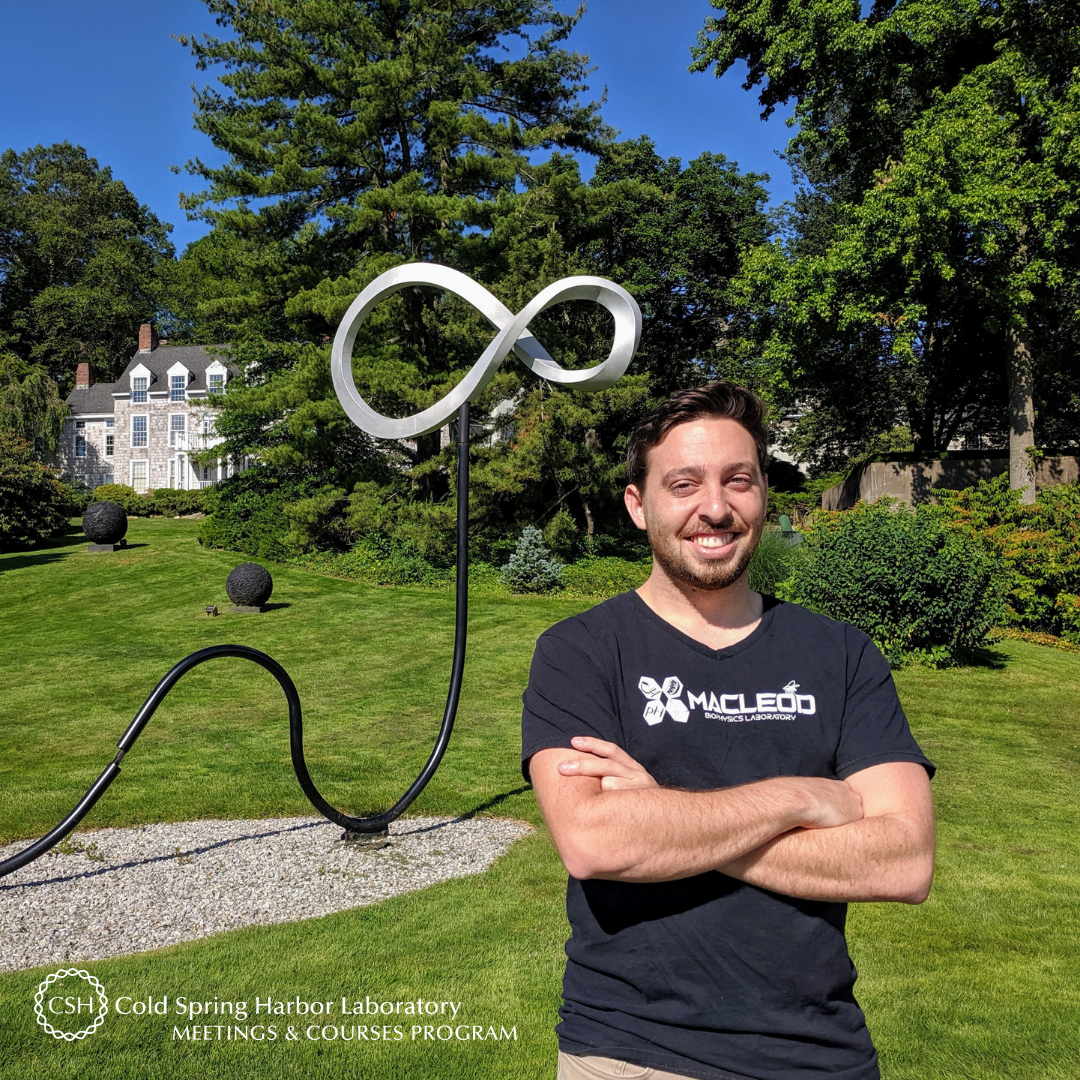Meet Tabita Ramirez-Puebla of The Forsyth Institute. The Mexican national is a postdoctoral scientist in Gary Borisy’s lab. Tabita is on campus for her maiden meeting at CSHL – Microbiome – where she presented a poster entitled “Application of CLASI-FISH to visualize the micron-scale spatial structure of the microbiome of the kelp Nereocystis luetkeana.”
What are your research interests? What are you working on?
I am a biologist interested in the study of microbiomes. Particularly, I am interested in the ecological implications of the distribution of microbes in relation to the micron-scale features of their environment. The spatial arrangement plays a key role in the interaction of bacteria with other microbes, hosts and their environment. In my current project I am working to establish a method to visualize the dynamics of the bacterial biofilms in the human mouth.
How did you know you wanted to study this/make it the focus of your research?
In previous projects, I have worked with symbiotic bacteria of eukaryotic hosts and realized the relevance of microorganisms to both the host biology and functioning of the ecosystems. The importance of microbiomes is increasingly recognized and High-throughput ‘omics approaches allow us to study them in an effective way. However, in such techniques the spatial arrangement is destroyed during sampling. Visualizing the micron-scale spatial organization provides clues about micro-habitats, intertaxon associations and metabolic partners. I am using the human oral microbiome as a model to understand the dynamics of microbial communities at micron-scale. I want to study the micron-scale biogeography of microbiomes to obtain a more comprehensive understanding of their function and the ecological role of the different members in a microbial community.
How did your scientific journey begin?
I don’t remember a time in my life when I wasn’t interested in nature. When I was a child, I spent much time watching documentaries which helped to develop a curiosity that drove me to become a scientist.
I have been inspired by different scientists, but women in science made the biggest impact in my life. I remember how encouraging it was to read papers by women scientists because it made me realize that I could do it too. I have since had the opportunity to work and learn from strong, intelligent, and passionate women and continue to do so.
Was there something specific about the Microbiome meeting that drew you to attend?
I was particularly interested in the topics of Host-microbe community assembly, Microbe-microbe interactions, and Spatial studies of the microbiome. These subjects are very relevant for my current research and attending this meeting provides me with the opportunity to discuss them – and exchange ideas – with other scientists.
As of today, what is your key takeaway from the meeting?
There are many scientists studying the human microbiome to develop therapies and there are already successful examples. I find this very interesting and inspiring.
What and/or how will you apply what you’ve learned from the meeting to your work?
I think that I can learn something new just by talking with other attendants about their projects. I have learned of eye-catching approaches that I would like to apply to my future research in microbiomes.
If someone curious in attending this meeting asked you for feedback or advice on it, what would you tell him/her?
I think this conference has an outstanding panel of speakers and the chairs organized this event in such a way that attendees have many opportunities to engage in high-level discussions that can generate a lot of feedback.
What do you like most about your time at CSHL?
The landscape of CSHL is gorgeous! It’s the perfect environment that fosters creativity. This is my first meeting at the CSHL and it is what I expected it to be: beautiful location, and attendants are enthusiastic and willing to talk.
Thank you to Tabita for being this week's featured visitor. To meet other featured scientists - and discover the wide range of science that takes part in a CSHL meeting or course - go here.






